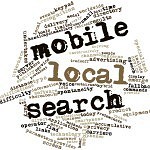17 Quick Hits On SEO For Blog Posts
Checklist for Optimizing Your Blog Posts for Local SEO
☐ Front-load the title tag
Google puts more weight on words found in the beginning of the title tag.
☐ Seo-friendly urls
Create short and sweet urls that include the target keyword.
☐ Use multimedia in blog posts
Include at least 1 multimedia type (video, audio, images, and lists) in every blog post that gets published.
☐ Use outbound links
Include at least 2 outbound links to authority sites (popular blogs, news sites, and .edu and .gov resources) in every piece of content that gets published.
☐ Include the keyword in the beginning of the post
Include the target keyword in the first 100 words of the article.
☐ Wrap the target keyword in an H1 tag
Make sure the blog post’s title is in an H1 tag.
☐ Load time/pagespeed
Use the Google pagespeed insights tool to figure out the site’s loading speed.
☐ Add modifiers to the title tag
Add modifiers like “2020″, “best”, “guide”, and “review” to help rank for long tail versions of the target keyword.
☐ Use prominent social sharing buttons
Make sure the social sharing buttons are front and center on blog posts and articles.
☐ Publish long content
Write at least 1500 words for content with competitive keywords.
☐ Slash bounce rate
Include internal links at the top of the article.
☐ Use LSI keywords
Include 1-2 LSI keywords in every article.
☐ Dwell time
Write long, engaging content that keeps people reading. Put a lot of effort into making the first paragraph interesting and compelling.
☐ Internal linking
Add 2-3 internal links to older articles when it gets published.
☐ H2 and H3 tags
Include the keyword once in an h2 or h3 subheading.
☐ Image optimization
Tag the images with keyword-rich alt text & captions
☐ Optimize clicks to content
Make sure high-priority pages are no more than 3 clicks away from the homepage.






No Comments